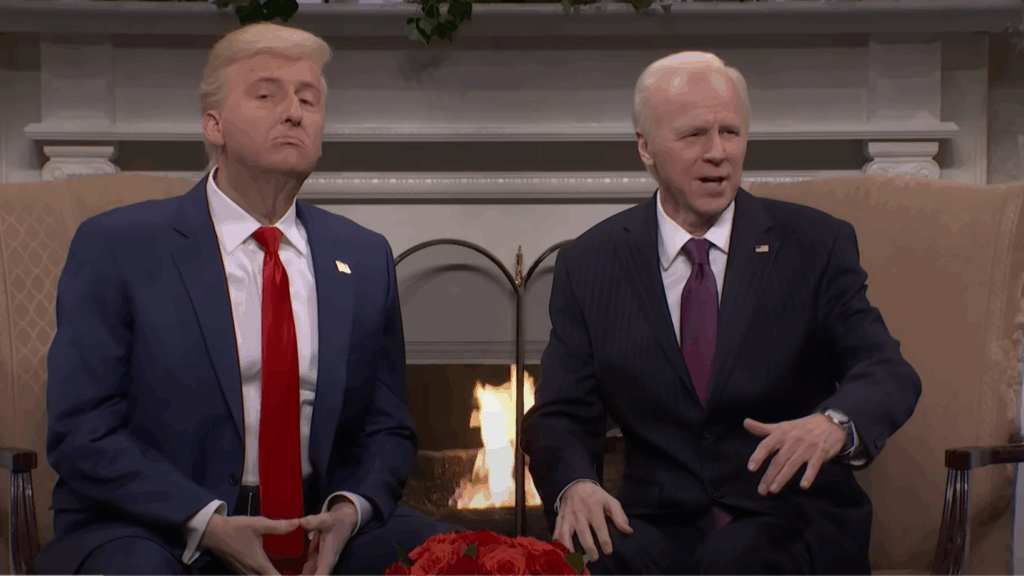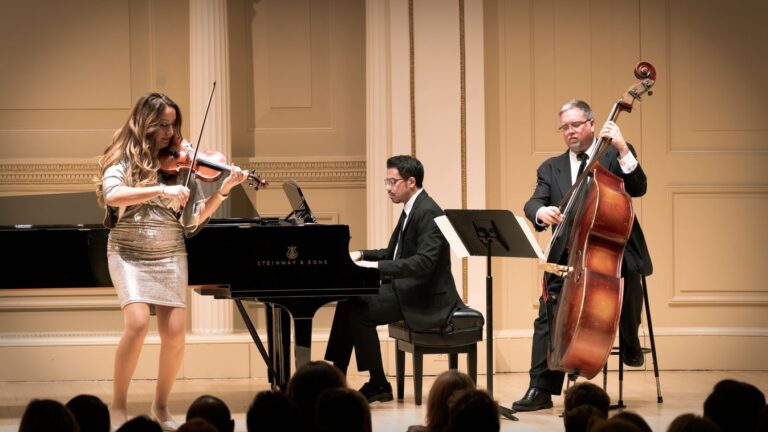Jesse Merriam teaches courses in constitutional law, legal theory, and legal reasoning. Before coming to Patrick Henry College, he served for six years as an assistant professor of political science and the pre-law advisor at Loyola University Maryland. He also worked as an appellate litigator at a D.C. constitutional law firm and as a research associate at the Pew Research Center’s Forum on Religion & Public Life. He has published over a dozen academic articles in top law-review and peer-reviewed journals, covering such diverse topics as legal conservatism, the meaning of the rule of law, church-state relations, and the theory and practice of originalist constitutional interpretation.
***
These are watershed years in the history of the U.S. Supreme Court, as we can witness a major shift in constitutional interpretation: the ‘living constitution’ is giving place to ‘originalism‘. Can you explain the background and the stake of this shift?
The debate between living constitutionalism and originalism can be traced to the Founding Era, but the debate did not take its modern-day form until the 1950s and 60s, when the Warren Court began interpreting the Constitution broadly to further a distinctly progressive agenda—particularly in race relations, church-state affairs, and criminal procedure.
This generated criticism within the legal academy. For example, in 1959, Herbert Wechsler charged the Warren Court with failing to issue decisions based on neutral principles, which he claimed is a core requirement of the power of judicial review. In 1971, Robert Bork argued that, in the realm of constitutional law, courts can provide these neutral principles only if their constitutional interpretations are faithful to the Framers’ original intent. In 1977, Raoul Berger used this methodology to argue that many of the Warren Court’s interpretations of the Fourteenth Amendment were illegitimate. This led a liberal law professor, Paul Brest, to coin the term ‘originalism,’ as a criticism of how scholars like Bork and Berger were thinking about constitutional law.
The next big moment arose in 1985, when the Reagan Administration formally coalesced around originalism, with Attorney General Edwin Meese announcing that this was the only legitimate method of interpreting the Constitution. The following year, Judge Antonin Scalia identified himself as an originalist, and he was thereafter appointed by President Reagan to the U.S. Supreme Court, becoming the first self-identified originalist on the Court. Over the next several years, the Federalist Society increasingly aligned itself with originalism.
In the nearly 40 years since Scalia’s appointment, originalism has become the core methodology of legal conservatism, so that
legal conservatism and originalism have become largely synonymous.
As a result, there are many judges and scholars who identify as originalists now, and there are many judicial decisions and law review articles employing originalist techniques in interpreting the Constitution.
The triumph of originalism, though, has arguably been more of a formal than a substantive victory. While the originalist movement has certainly succeeded in normalizing originalism as a mode of constitutional interpretation, that mode has become more flexible in the process, which has enabled a broad array of scholars and judges to argue for progressive causes—such as in gay rights, immigration law, and abortion—under the banner of originalism.
So as originalism has become the default mode of constitutional interpretation, is it increasingly used by various ideological strands to advance their own agendas? How do you see the emerging common-good constitutionalism embraced by the national conservativism from this perspective?
I would not go so far as to say that it has become the default mode, but it has certainly become more mainstream, and in the process, it has become more flexible as a methodology and thus more appealing to non-conservatives.
This is, incidentally, one of the criticisms that the common-good constitutionalists mount against originalism: that the broadening of originalism to make it more appealing to progressives reveals a core deficiency in the originalist movement—namely that originalism is merely a mode or form of constitutional interpretation, unmoored from any substantive commitments. The common-good constitutionalists have thereby sought to reframe constitutional theory around a common good, in particular the common good expressed in the natural law tradition.
I find much in this perspective appealing, and I agree that constitutional law ultimately must be grounded in something other than the text itself, but I am not entirely on board with the common-good movement, given how many of its proponents seek to ground American constitutionalism outside of the American tradition.
Let’s turn back to the recently concluded term. What was the background and history that led to the affirmative action judgment of this year? What was the original rationale behind the introduction of this programme and what is the main source of criticism?
The Supreme Court’s first major affirmative action case arose in 1978, but affirmative action in government hiring and university admissions developed in the 1940s and expanded with the rise of the civil rights revolution in the 1950s and 60s.
The original rationale was simply to provide a remedy for the public and private racial discrimination pervading American life in the first half of the 20th century. The thinking was that many of the gaps separating white and black Americans, particularly in terms of academic achievement and wealth accumulation, would be remedied by giving blacks an advantage in hiring decisions and university admissions.
Unfortunately, the black-white gap has not diminished substantially over time, and that has led more institutions to adopt affirmative action and has generated a call for more extensive preferences. Affirmative action is now a major feature of just about every facet of higher education and the preferences are much stronger than they were when they were first developed.
There are many criticisms of affirmative action, with the primary ones being that affirmative action: (1) discriminates against non-blacks, particularly whites and more recently, Asians, (2) has changed from a one-time push over the finish line to a multi-generational, entrenched advantage, (3) exacerbates racial divisions, particularly because lower-income non-blacks are excluded from the effort to offset the advantages of family wealth, and (4) serves principally to assist advantaged blacks, many of whom are immigrants whose ancestors are not part of the legacy of American slavery and racial conflict.
Did your institution, the Patrick Henry College accept this admission programme? What was the reason for this?
Almost every American institution of higher education receives federal funding and therefore must comply with any affirmative action measures
that the federal government attaches to that funding. I am blessed to teach at Patrick Henry College, a conservative Christian college with a mission to serve Christ and steward the American Founding. We are one of the few American colleges that declines to receive federal funding and we are therefore not subject to any federal affirmative action mandates attached to that funding. That is to say, Patrick Henry College is committed to treating all people with dignity and respect as matters of course, not as a matter of government compulsion. That Biblical perspective extends to our application processes as well.
How did the Court decide the affirmative action case? How did Chief Justice Roberts formulate the opinion?
The Supreme Court’s affirmative action decision this summer is a consolidation of two case—Students for Fair Admissions v. Harvard College and Students for Fair Admissions v. University of North Carolina. Both cases were brought by the same organization, Students for Fair Admissions (SFFA), and both cases challenged the legality of affirmative action.
The challenges, however, were distinct in one important way: The UNC case challenged the legality of affirmative action as practised by a public university, and therefore was like all of the Supreme Court’s previous affirmative action cases, in that it raised a constitutional question. Because the U.S. Constitution applies only to governmental actors, and Harvard is a private institution, the Harvard case involved a statutory challenge under Title VI of the Civil Rights Act of 1964, a provision barring institutions that receive federal funding from discriminating on the basis of race.
The Court, however, did not treat this as a significant distinction, because it held that Harvard was subject to the same legal constraints as UNC, on the ground that Title VI simply extends to private institutions the constitutional restraints on racial discrimination contained in the Fourteenth Amendment (applicable to state governments, including state universities) and the Fifth Amendment (applicable to the federal government).
The majority opinion invalidated the Harvard and UNC affirmative action programmes on the basis that they failed to satisfy the strict scrutiny standard outlined for affirmative action in Grutter v. Bollinger (2003). Under that standard, a law is permissible only if it is narrowly tailored to achieve a compelling government interest. The Court found that both UNC and Harvard failed to satisfy this standard in how they employed racial preferences in their admissions policies.
So, in its judgement, the Court ended a several decades long battle. What is the stake of this judgement in your view?
Well, I don’t think this will end the battle over affirmative action. In a 2021 law review article, I demonstrated how, although affirmative action in higher education can be traced to the beginning of the civil rights revolution in the late 1940s, scholars have been consistently and erroneously predicting the demise of affirmative action for nearly 50 years. To illustrate how often scholars have erred on this point, I began the article by collecting a sample of publications, dating all the way back to 1978, predicting the end of affirmative action. This sample constituted over 50 citations and took up several pages of law journal space.
A big factor in these erroneous predictions is that scholars are looking at the wrong indicia. In just about every other area of law, we can look to statutes, judicial decisions, and polling data as reliable indicators for the survival rate of programmes. But affirmative action is unusual, if not unique, in this respect. Indeed, to the best of my knowledge, affirmative action is the only program in American history that has broadened in scope and strengthened in force in the face of growing resistance from state legislatures, federal courts, and public opinion.
So I don’t think that much is at stake in the SFFA opinion. It likely will change how affirmative action is practised, but not whether it is practised.
You did research on the legal concept of the ‘rule of law’. What are the essential elements of this legal concept, and does it have a uniform or standardized meaning, or is it embedded in a certain legal culture?
Lon Fuller’s eight elements of the ‘inner morality of law’ provide the best articulation, in my view, of what necessarily inheres in the rule of law. But these are necessary, not sufficient criteria, in my view. That is, a system without these protections does not guarantee the rule of law, but systems may require additional criteria to be satisfied depending on their particular legal cultures. For example, the United States may require a certain form of textual constitutionalism as part of the rule of law in a way that a country without a written constitution would not. Likewise, a country with a particular religious tradition may require the legal system to be consistent with a particular faith in a way that a secular country would not.
This concept is recently used by the European Union against Member States including Hungary and Poland to discipline their policy views and aspirations. How do you see the use of the concept of the ‘rule of law’ in such a technocratic way?
One of the most dangerous trends we are seeing in the West is the increasing deployment of the rule of law for instrumental political ends.
We are seeing this in the European Union, just as we are seeing it used in the United States, with those in power invoking the rule of law as a weapon against political dissidents and adversaries. This should alarm all of us, no matter where we are personally situated on the political spectrum.
Related articles:








